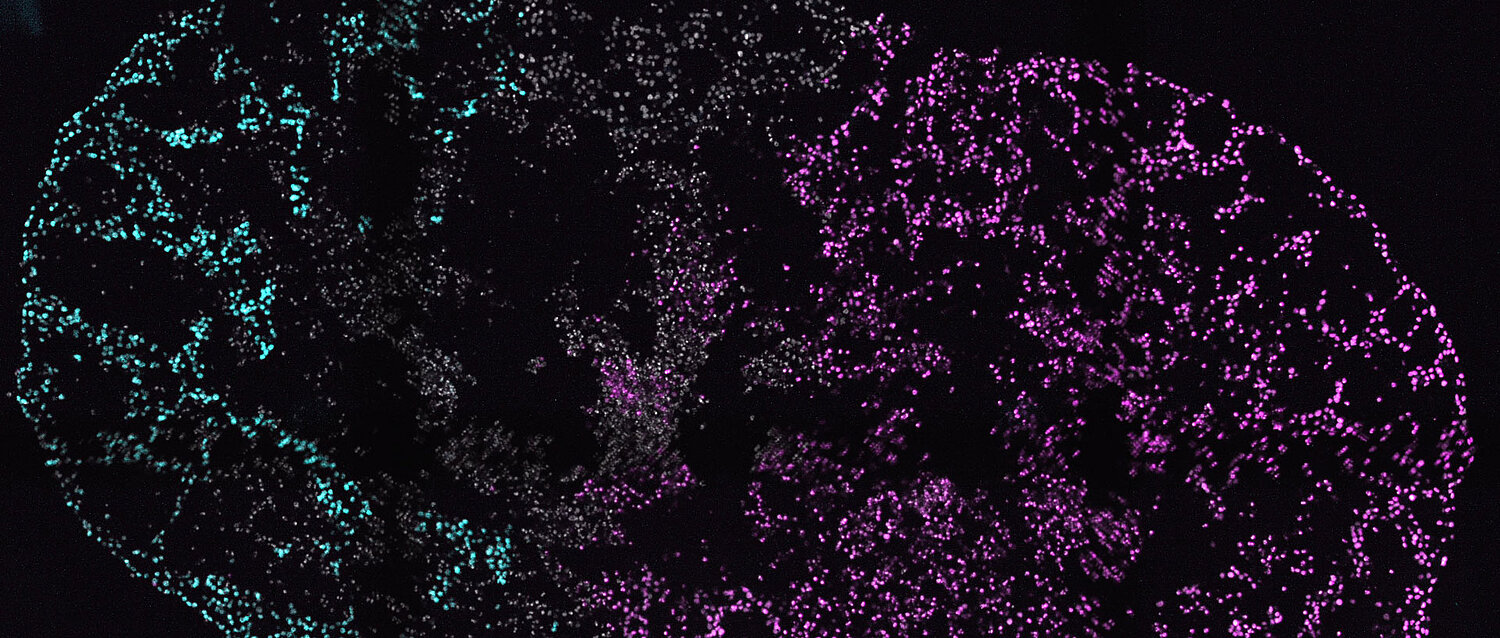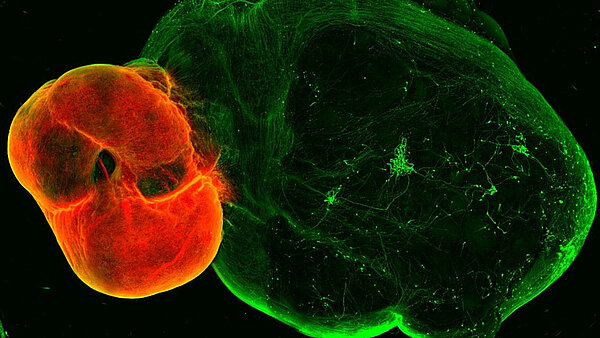Cardiovascular diseases are the most common cause of death worldwide. In adults, most diseases affect the left ventricle, which pumps oxygen-rich blood around the body. Congenital defects usually affect other regions of the heart that are important for the development and maintenance of the circulatory system. A model of the human heart that replicates the most important regions could deepen our understanding of heart disease and congenital heart malformations. The research team led by Sasha Mendjan at the IMBA - Institute of Molecular Biotechnology of the Austrian Academy of Sciences (OeAW) has now succeeded in developing such a model. The molecular biologists presented the first physiological organoid model that includes all vital heart structures. It forms the characteristic heart chambers and beats like a foetal heart. This study has now been published in Cell.
Cardioids of the left ventricle
In 2021, the Mendjan lab presented the first chamber-like cardiac organoid formed from human induced pluripotent stem cells. These self-organising cardiac organoids, also known as cardioids, recapitulated the development of the left ventricle in the very earliest days of embryogenesis. "These cardioids were a proof-of-pinciple and an important step forward," says Mendjan.
We asked: If we let all these organoids co-develop together, do we get a heart model that co-ordinately beats like the early human heart?
New: Multi-chamber heart organoids
In the new study, the IMBA team expanded on its earlier work. The researchers initially created cardioid models of the individual heart structures, which provided information about the shape and tissue organisation of the chambers. However, the aim was to allow the individual ventricular organoids to grow together - and to achieve the propagation of the electrical signal typical of the beating heart. In the current study, this goal was achieved for the first time: the jointly grown ventricular organoids actually developed a heartbeat typical of early foetal development: "The signal spread from the atrium to the left and then to the right ventricle - just like in early foetal heart development in animals," recalls Sasha Mendjan. "We now observed this fundamental process in a human heart model for the first time, with all its chambers," says the IMBA researcher.
The development of the heartbeat
The multi-chamber cardioids make it possible to investigate how regional differences in gene expression lead to specific contraction patterns of the chambers and how communication between the chambers develops. The researchers can gradually understand how the human heart begins to beat.
We saw that as the organoid chambers developed, they performed an intricate dance of lead and follow.
"We saw that as the organoid chambers developed, they performed an intricate dance of lead and follow. At first, the left ventricular chamber leads the budding right ventricular and atrium chambers at its rhythm. Then, as the atrium develops – two days later – the ventricles follow the atrial lead", explains Alison Deyett, PhD student in the Mendjan group and one of the first authors of the study.
Screening platform for congenital heart disease and therapy
In a proof-of-principle, the Mendjan team has set up a screening platform for chamber-specific defects of the multi-chamber cardioids. This involves analysing on a large scale which changes trigger known teratogens and mutations. "Our tests show that multichamber cardioids can recapitulate embryonic heart development and reveal disruptive effects on the entire heart with high specificity. We do this with a holistic approach by looking at multiple measurements simultaneously," summarises Mendjan. This has created a basis for gaining a better understanding of the growth and regeneration potential of the heart.
In the future, multi-chamber heart organoids can be used for toxicology studies and to develop new drugs with heart chamber-specific effects. And heart organoids developed from patient-derived stem cells could, in the future, give an insight into developmental defects and how they may be treated and prevented.
The work at IMBA has been carried out in collaboration with HeartBeat.bio AG, an IMBA spin-off company co-founded by Sasha Mendjan. HeartBeat.bio already uses IMBA's left ventricular cardioid technology in a fully automated and integrated 3D drug discovery platform for various forms of heart failure. Now IMBA has also granted the company an exclusive licence for the multi-chamber cardiac organoid technology.

